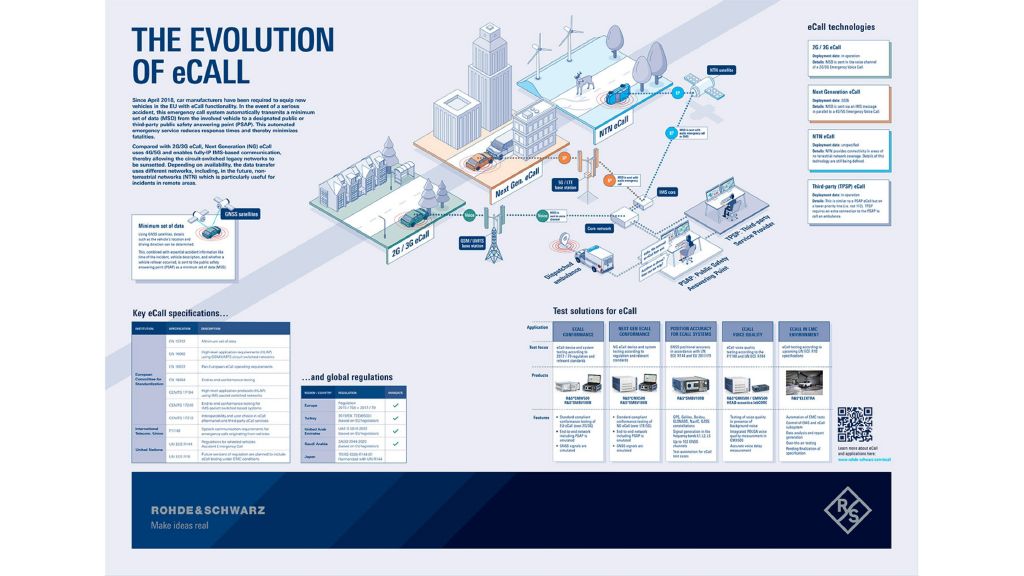Since April 2018, car manufacturers have been required to equip new vehicles in the EU with eCall functionality. In the event of a serious accident, this emergency call system automatically transmits a minimum set of data (MSD) from the involved vehicle to a designated public or third-party public safety answering point (PSAP). This automated emergency service reduces response times and thereby minimizes fatalities.
Compared with 2G/3G eCall, Next Generation (NG) eCall uses 4G/5G and enables fully-IP IMS-based communication, thereby allowing the circuit-switched legacy networks to be sunsetted. Depending on availability, the data transfer uses different networks, including, in the future, non-terrestrial networks (NTN) which is particularly useful for incidents in remote areas.
Using GNSS satellites, details such as the vehicle’s location and driving direction can be determined. This, combined with essential accident information like time of the incident, vehicle description, and whether a vehicle rollover occurred, is sent to the public safety answering point (PSAP) as a minimum set of data (MSD).
Download this poster to get an overview of the technology, specifications, regulations and test solutions.





